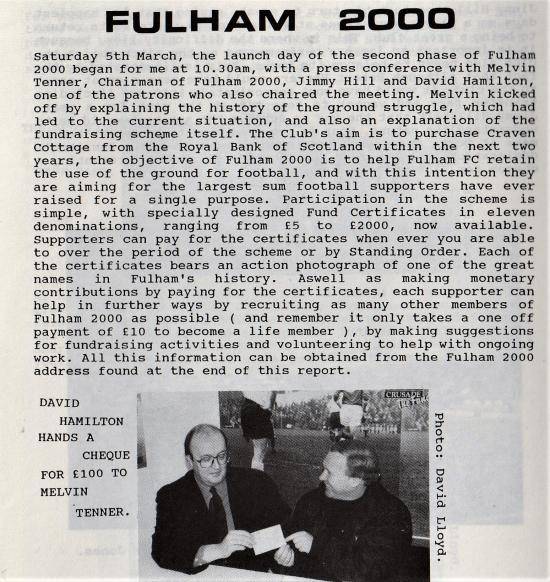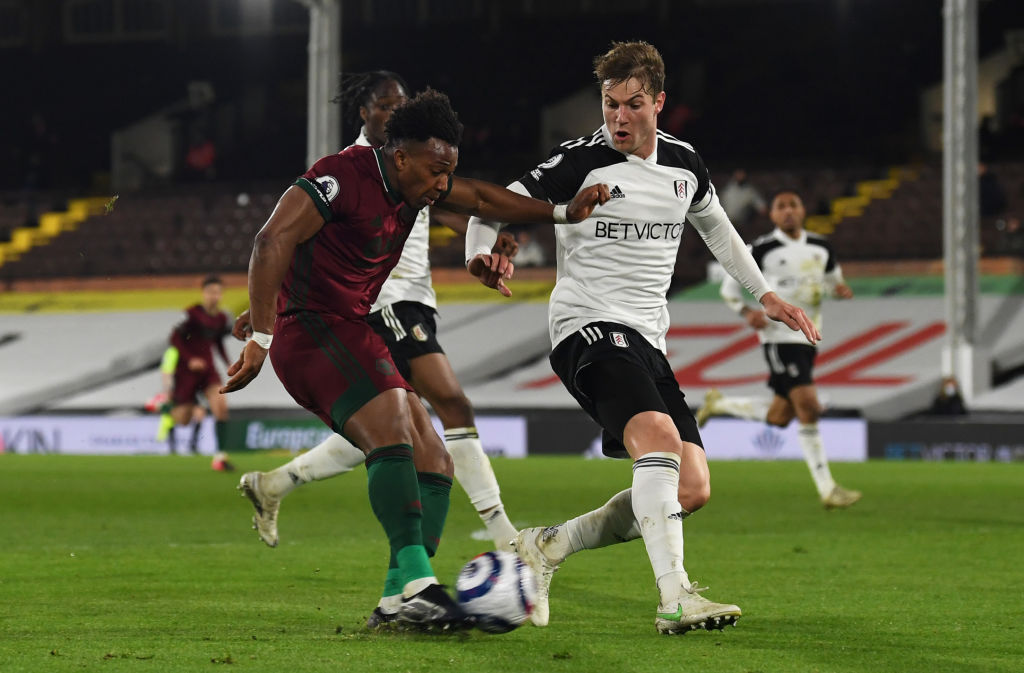The evening of Friday 9 April could have witnessed a resurgent Fulham overcome Wolverhampton Wanderers and rise, albeit briefly, above the relegation places. Unfortunately the sombre mood that accompanied the dignified tribute to the Duke of Edinburgh never evaporated. The match, where both teams were hoping to end a losing run, badly needed the energy of crowded grandstands. Instead it became increasingly lethargic and scrappy, with a conclusion that devastated the home club.
Ademola Lookman’s hamstring still troubled him and Tosin was atoning for his gift to Aston Villa, so Scott Parker started with Antonee Robinson and Terence Kongolo. The latter struggled to control the lively Adama Traore but Robinson made two early chances for Ruben-Loftus-Cheek and Aleksandar Mitrovic, both of whom headed wildly off target.
Just before the interval the American allowed Daniel Podence to slip past him and send over a sublime centre, which Willian Jose headed firmly past Alphonse Areola. A good goal, out of keeping with the rest of the half, was then invalidated by VAR to the bewilderment of all. Had Fulham gone on to win, this might have been remembered as the Night of Daniel’s Shoulder – the only part of him that could possibly have been ahead of Kongolo at the vital moment.
The second half saw no improvement in either team. There was an ominous moment midway through when Kongolo gave away a free kick just outside the area; Romain Saiss could not hit the target. Scott Parker brought on his substitutes at ten-minute intervals – Frank Anguissa, Josh Maja and Ivan Cavaleiro. The team looked a bit livelier but the winning goal would not come.
Meanwhile everyone had forgotten about Adama Traore. Not so long ago, while playing for Middlesbrough, he had dispossessed Aboubakar Kamara and run the length of the field through a static Fulham defence. On that occasion his effort had come to nothing but Friday evening brought him joy. Two minutes into added time Traore cut in from the right and fizzed the ball past Areola from the narrowest of angles. Although Wolves might have felt aggrieved at VAR in the first half they benefited from the excellent refereeing of Jonathan Moss, who ignored a Fulham foul and let Traore continue his run.
The Whites’ normally impeccable goalkeeper, who had previously exhorted his team-mates to ‘fight to the end’, could perhaps have saved Traore’s shot. Maybe he was astonished by its quality, so different from the efforts of the preceding 92 minutes.
In recent seasons some Fulham players have appeared unconcerned that the club was facing relegation. Not so the men who wore the white jerseys on Friday night. They all showed their desolation at the close, particularly Cavaleiro, though he had been on the pitch barely 10 minutes and had created a decent chance for Josh Maja just before the final whistle.
Newcastle, West Bromwich and Brighton all picked up points over the weekend but their results are irrelevant until Fulham win a few matches.
Melvin Tenner (1946-2021)
As the sumptuous new grandstand rises on the riverside it becomes harder to recall that in the 1980s and 1990s the club was in very real danger of losing its traditional home. Melvin Tenner, who passed away on Monday 12 April, was one of the devoted supporters campaigning to save Craven Cottage for later generations.
Melvin was a Fulham fan from the day he secured Johnny Haynes’s autograph at the Schoolboys’ Exhibition. His family had moved from Hackney to Forest Hill, and his father took Melvin to a variety of football matches including Charlton-Fulham in 1958-59, the season that saw Johnny Haynes and his team-mates win promotion to the Football League’s top tier.

The prospect of seeing Haynes in the First Division led Melvin to make the tedious fortnightly trip across London to Craven Cottage, and by his own admission he became obsessed with the Fulham and England captain.
In 1970 when Haynes’s contract ended and he moved to South Africa, Melvin’s enthusiasm for the club faded but after a few years he became once more a die-hard supporter. He recalls one very foggy evening when he was the only fan to turn up for a Supporters Club meeting at the Golden Lion Fulham High Street (he was given a special scarf for his keenness).
It was in the 1970s that Melvin met his future wife Eva. She took him to the ballet, he took her to Fulham v Hull City, the start of an FA Cup campaign that ended in a Wembley Final. The Tenners were season-ticket holders right up till 2007 when sadly Eva was no longer able to manage even wheelchair access.
The Supporters Club had regularly fallen foul of the Fulham Board and it was finally banned by Chairman Ernie Clay. In the summer of 1986, after Clay’s departure, Dominic Guard revived the organisation. Wwhen Jimmy Hill and his colleagues stepped in to save Fulham FC the Supporters Club became an integral part of the rescue campaign.
The most important task was to raise funds to secure Craven Cottage. With Melvin Tenner as Chairman the Supporters Club negotiated its own space in the ground, a focal point on matchdays and a place where people could buy decent merchandise like replica shirts to raise funds for Fulham. Eva, a packaging technologist, put her Marks and Spencer experience to good use.
Money flowed in, but more was always needed to convince the Royal Bank of Scotland, who now owned the ground, that it should remain a football stadium. Melvin enlisted the help of the Vice Presidents and the Riversiders, two groups that included some of Fulham’s wealthiest supporters. Local and national politicians also offered their backing, and the paramount sports journalist Brian Glanville ensured that everyone knew the facts about Fulham’s fight for survival.
In February 1993, Fulham 2000 was launched. Decades before, Melvin had asked Johnny Haynes for his autograph. Now he was asking him to support the campaign, and Johnny’s reply was prompt and positive. News photos of a press conference show Melvin hardly able to believe that his idol was sitting with him on the platform. Johnny was one of the first to pay his £10 subscription. The two men became close friends, and Johnny always responded to appeals for help. He later gave one of his England caps for auction.
Some of the club directors had doubts about Fulham 2000 – until they saw its success. A particularly inspired fund-raiser was the restaging of the 1975 Cup Final with most of the original players giving their services. American Airlines sponsored the match and the GMB union once again gave invaluable assistance. Replica medals, made by a shop in Fulham Palace Road, were handed out – this time Fulham got the winners’ medals. (See my recent blogs from 29 March and 23 March on Alan Slough.)
Fulham 2000 raised the magnificent sum of £600,000. Unfortunately, both within the organisation and in the Fulham FC Board, disputes arose about the way to proceed. People resigned or were pushed out, and the feeling of unity diminished. However, Melvin felt that the Board’s decisions were sound.
Everything changed with the arrival of Mohammed Al Fayed. Melvin now faced the (welcome) problem of returning the Fulham 2000 fund to its contributors. He contacted them all and wrote hundreds of cheques, though by no means every fan requested a refund.
The views expressed in this blog are those of the author and unless specifically stated are not necessarily those of Hammersmith & Fulham Council.
Want to read more news stories like this? Subscribe to our weekly e-news bulletin.

